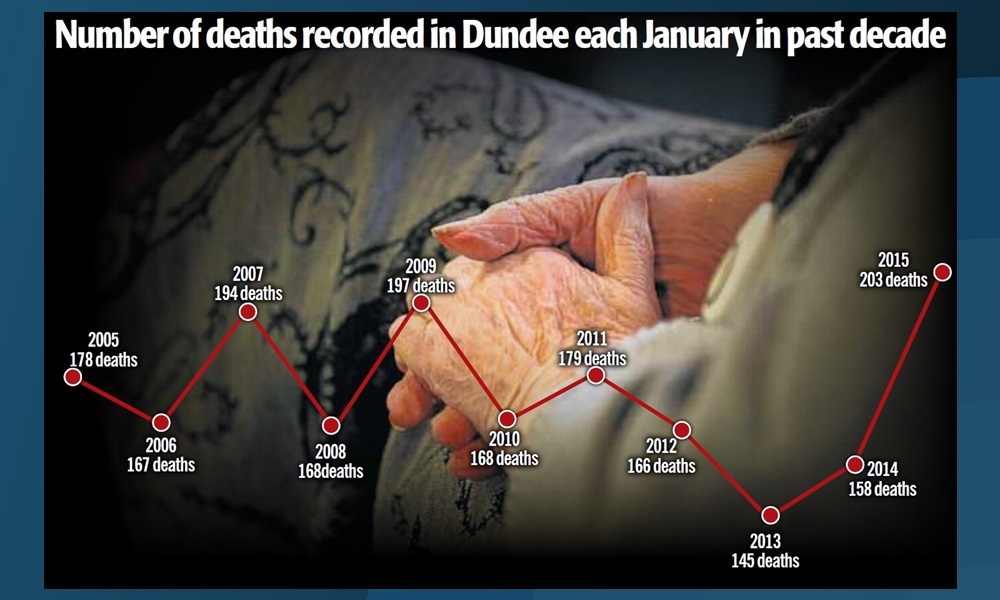New figures have revealed a decade-high spike in winter deaths across Tayside and Fife, The Courier can reveal.
The number of people who died during January 2015 was almost a third more than the previous year.
Dundee was particularly badly hit, though Perth also suffered and numbers for December 2014 were also markedly up on the previous year.
A full breakdown of deaths for winter in Scotland as a whole and for individual local authority areas is unlikely to be available before March but some regional figures suggest residents are being struck down by a particularly virulent strain of winter illness sweeping across Scotland.
Earlier this week, The Courier reported health bosses were forced to cancel a string of operations as a result of “exceptional demand”.
NHS Tayside said residents had been left “acutely ill”, while NHS Fife said it was braced to see an increase in patients as March approaches.
Figures for Dundee provided by the city’s registrar’s office were at their highest level for more than a decade.
They recorded previous spikes in January 2007 and 2009 but in no other year during the period 2005-15 had they topped 200 during this month.
Less comprehensive figures were available for Perth but registrars there said they too had seen an increase in January deaths, up from 82 in January 2014 to 102 this year.
The Tayside and Fife figures are mirrored by those south of the border, with the death rate in England and Wales also about a third higher than usual for this time of year.
Some 28,800 deaths were registered in the fortnight ending January 23, according to the Office for National Statistics (ONS).
That is 32% higher than the 21,859 average for the same period over the previous five years.
The ONS suggested the flu virus and the cold snap could be to blame for the increased death rate.
Additional analysis by Public Health England (PHE) found deaths among people aged over 65 have been higher than expected for six weeks, even taking the time of year into account.
Dr Richard Pebody, head of seasonal flu surveillance at PHE, said: “In recent weeks we have seen evidence of significant excess mortality, particularly in the elderly, with more deaths than expected at this time of the year.
“Two important causes of excess deaths during the winter are influenza and cold snaps, although estimating exactly how much can be attributed to each takes more time.
“The main type of flu that has been circulating this winter so far is well recognised to particularly impact groups such as the elderly and those with underlying chronic health problems, resulting in increases in hospitalisations and deaths. That is why we recommend these groups receive flu vaccine each year ideally before the flu season starts.”
